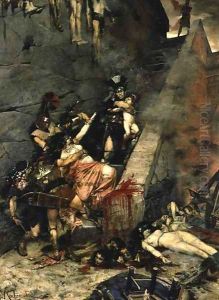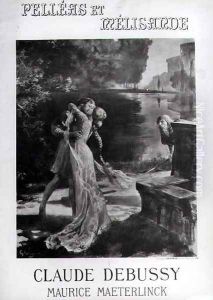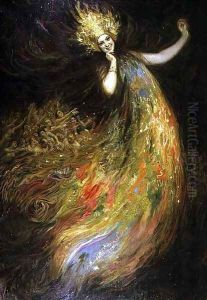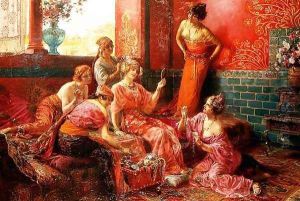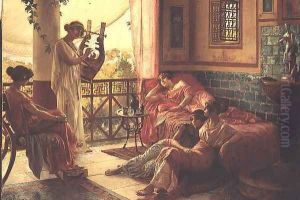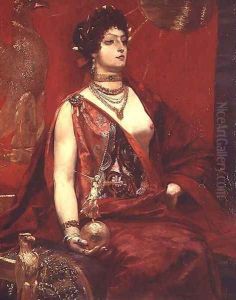Georges Marie Rochegrosse Paintings
Georges Marie Rochegrosse was a distinguished French historical and decorative painter, born on August 2, 1859, in Versailles, France. He was an artist whose work epitomized the grandeur and excess of the Belle Époque period, blending elements of Romanticism with the burgeoning Art Nouveau movement. Rochegrosse's upbringing and education played a pivotal role in shaping his career. He was adopted by his aunt, the novelist Thérèse Bentzon, after the early death of his mother. This connection to a literary figure not only exposed him to the world of arts and letters from a young age but also to a milieu that valued cultural and artistic endeavors. He studied at the École des Beaux-Arts in Paris under Alexandre Cabanel, a teacher known for his influence on many prominent artists of the time. Rochegrosse's style was characterized by his vivid use of color, dramatic compositions, and often, a fascination with historical and mythological themes. His works often depicted scenes of opulence, violence, and passion, drawing on stories from the Bible, classical mythology, and medieval history.
Rochegrosse achieved significant acclaim during his lifetime. His painting 'The Knight of the Flowers' (1894) is one of his most celebrated works, showcasing his skill in combining historical narrative with lush, decorative elements. He was also known for his monumental murals, such as those he created for the Sorbonne and the Hôtel de Ville in Paris. Beyond his contributions to painting, Rochegrosse was deeply involved in the artistic community of his time, contributing to the vibrant cultural life of Paris in the late 19th and early 20th centuries.
In 1890, he married Marcelle Géniat, a renowned actress, further entwining his life with the arts. The couple's home became a gathering place for literary and artistic figures, reflecting their pivotal role in the cultural landscape of the period. Despite his success, Rochegrosse's work fell into relative obscurity in the decades following his death on July 11, 1938, in El Biar, Algeria. However, recent years have seen a renewed interest in his oeuvre, with art historians and collectors alike revisiting his contributions to French art history. Rochegrosse's legacy is now appreciated not only for his mastery of painting but also for his embodiment of the spirit of an era that celebrated beauty, emotion, and grandeur.
